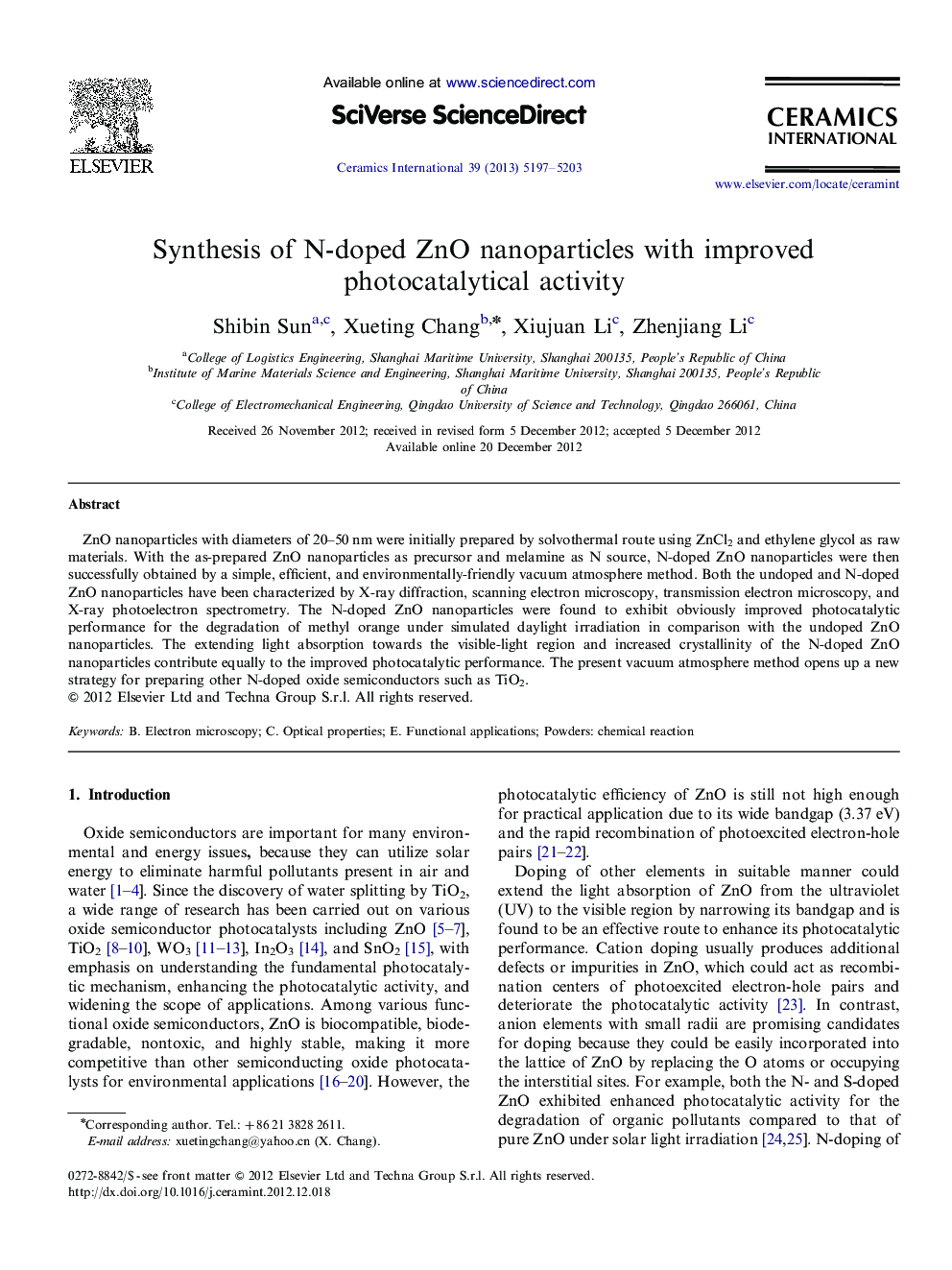| Article ID | Journal | Published Year | Pages | File Type |
|---|---|---|---|---|
| 1463126 | Ceramics International | 2013 | 7 Pages |
ZnO nanoparticles with diameters of 20–50 nm were initially prepared by solvothermal route using ZnCl2 and ethylene glycol as raw materials. With the as-prepared ZnO nanoparticles as precursor and melamine as N source, N-doped ZnO nanoparticles were then successfully obtained by a simple, efficient, and environmentally-friendly vacuum atmosphere method. Both the undoped and N-doped ZnO nanoparticles have been characterized by X-ray diffraction, scanning electron microscopy, transmission electron microscopy, and X-ray photoelectron spectrometry. The N-doped ZnO nanoparticles were found to exhibit obviously improved photocatalytic performance for the degradation of methyl orange under simulated daylight irradiation in comparison with the undoped ZnO nanoparticles. The extending light absorption towards the visible-light region and increased crystallinity of the N-doped ZnO nanoparticles contribute equally to the improved photocatalytic performance. The present vacuum atmosphere method opens up a new strategy for preparing other N-doped oxide semiconductors such as TiO2.
